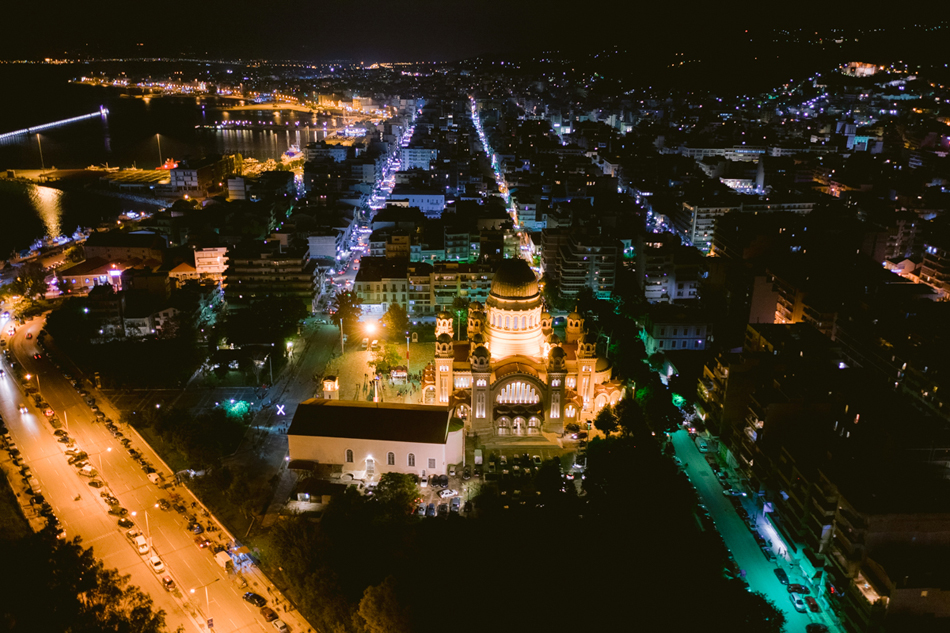In the southern coastal area of Patras, near the place of the martyrdom of the Apostle Andrew, two temples dominate and are dedicated to the patron saint of the city, the latest of which is one of the largest ones in the Balkans and is today the Cathedral - a symbol of Patras.
The old church was originally built at the end of the 5th century on the ruins of an ancient temple dedicated to the Goddess Demetra and belongs to the type of basilica. It was an important pilgrimage and suffered many damages over the centuries, most recently being set on fire by the Turkalbanians in 1770. It remained in ruins until the construction of the present temple, which began in 1836 according to the plans of the famous architect Lysandros Kaftantzoglou. Architecturally, it belongs to the type of the three-aisled basilica and is internally decorated with great frescoes and icons of the Ionian style, works of famous artists. In the southern aisle is the tomb of Agios Andreas, lined with marble, while next to the temple, in an underground vaulted cave, a source of water is preserved, which is considered the holy water.
To the left of the old church is the imposing new church, which is of Byzantine style. It was founded in 1908 by King George I and was inaugurated in 1974, after its construction was interrupted, due to ground instability and financial difficulties. Its dome is 46 meters high and on its roof is placed a gilded cross five meters high, while smaller crosses crowned the domes of the twelve bell towers. Internally it has an area of 2,500 square meters and its capacity exceeds of 8,000 people. Its hagiography began in 1985, stopped in 1993 and continued in 2006. In the church is kept the head of St. Andrew, given to Patras by Italy in 1964, as well as part of the cross of his martyrdom.
The church celebrates on November 30 and on September 26 (anniversary of the return of the Saint Head).




